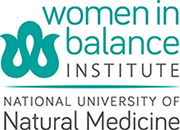There is no guaranteed way to absolutely prevent breast cancer, but every woman can take steps to lower her risk. No matter what your age, take action to protect your breast health and improve your overall well-being.
Maintain a healthy weight Being overweight has been found to increase breast cancer. In the 2010 Cancer Prevention Study II Nutrition Cohort, it was found that women with waists of 42 inches or more (47 inches for men) had approximately twice the risk of death compared to those with 30 inch waists. The larger the waist, the higher the risk – whether the person was at normal weight, overweight or obese as shown by body mass index. The take home message is to watch your waist size regardless of your weight. Additionally in midlife women, as the ovaries stop producing estradiol estrogen, fat tissue begins to produce estrone. With estrogen a growth hormone for tissue, high levels of estrone from adipose can influence breast tissue growth. At midlife and beyond the stark reality (bummer, we know) is that in order to have a healthy weight, calories need to be reduced and healthier sources (vegetables, fruits, nuts, beans, lean protein) need to be consumed. To eat for health, means being a realist instead of a purist – 80-90% of the time eat healthy, and 10-20% of the time indulge your favorites in moderation.
Move your body every day The connection between physical activity and reduction of breast cancer risk continues to grow. In one study from the Women’s Health Initiative (WHI), 1.25 – 2.5 hours of brisk walking per week reduced a woman’s risk by 18%. The American Cancer Society recommends 45-60 minutes of focused physical activity five or more days a week. And this is movement – not necessarily spandex and a gym. Park your car at the far end of the parking lot, choose to walk a block every day – and then another and another – as you feel better. Walk the flights of stairs instead of using the elevator. Make movement part of your daily living – over time the results will pay off.
Reduce alcohol intake The risk of breast cancer is directly linked to alcohol consumption. Compared with non-drinkers, women who consume one alcoholic drink daily have a very small increased risk. Those having 2-5 drinks daily have about a 1 ½ times risk as non-drinkers. Women should limit alcohol to no more than one drink per day.
Limit birth control use Studies have found that women using oral contraceptives have a slightly higher risk for breast cancer than women who have never used them. This risk factor declines back to normal over time after stopping and those who have not used for 10 years or more do not appear to be at any increased breast cancer risk.
Balance hormones During perimenopause when cycles can become erratic, there may be months where ovulation does not occur. In a monthly cycle estrogen dominates the first half and progesterone the second half. Without ovulation, the full progesterone response does not happen. As a hormone, estrogen promotes tissue growth and progesterone balances the equation by further developing and shedding the tissue. Without estrogen/progesterone balance – tissue growth can become unchecked in over 200 receptor sites in the body, including the breasts. During the midlife years it is important to work with a provider that understands overall hormone balance and strategies to help you return to a steady state. Use the NUNM’s provider locator tool to find the right provider for you!

